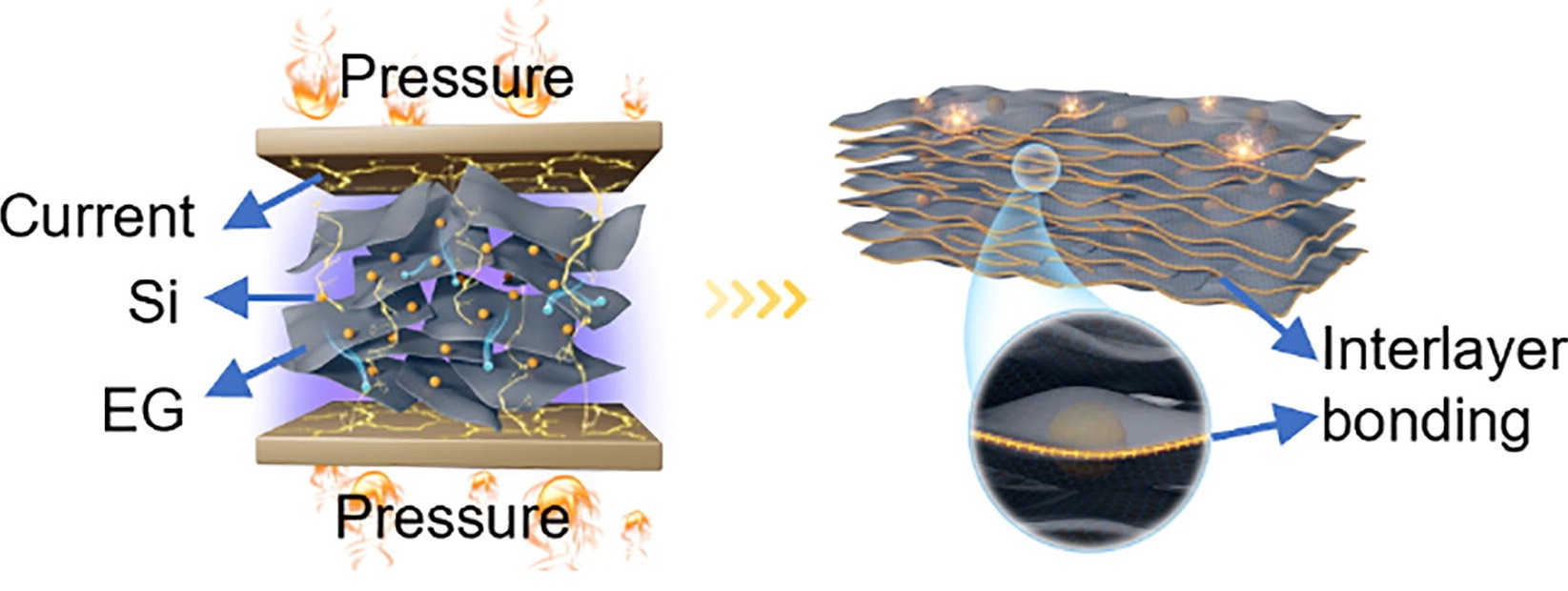High mechanical strength Si anode synthesis with interlayer bonded expanded graphite structure for lithium-ion batteries
Despite advancements in silicon-based anodes for high-capacity lithium-ion batteries, their widespread commercial adoption is still hindered by significant volume expansion during cycling, especially at high active mass loadings crucial for practical use. The root of these challenges lies in the mechanical instability of the material, which subsequently leads to the structural failure of the electrode. Here, we present a novel synthesis of a composite combining expanded graphite and silicon nanoparticles. This composite features a unique interlayer-bonded graphite structure, achieved through the application of a modified spark plasma sintering method. Notably, this innovative structure not only facilitates efficient ion and electron transport but also provides exceptional mechanical strength (Vickers hardness: up to 658 MPa, Young’s modulus: 11.6 GPa). This strength effectively accommodates silicon expansion, resulting in an impressive areal capacity of 2.9 mA h cm−2 (736 mA h g−1) and a steady cycle life (93% after 100 cycles). Such outstanding performance is paired with features appropriate for large-scale industrial production of silicon batteries, such as active mass loading of at least 3.9 mg cm−2, a high-tap density electrode material of 1.68 g cm−3 (secondary clusters: 1.12 g cm−3), and a production yield of up to 1 kg per day.

This breakthrough opens up new possibilities in battery technology, with implications for a wide range of industries. We are incredibly proud of our team’s dedication and hard work in making this achievement possible. For more details, please refer to the link. Let’s continue pushing boundaries and driving innovation together!

